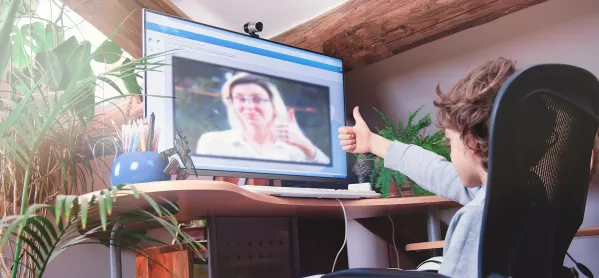- Home
- 5 lessons I’ve learned from remote teaching
5 lessons I’ve learned from remote teaching

“We’ve done this 100 times in class. Why are they finding it so hard to do at home?”
Remote teaching can feel like it’s creating more questions than answers.
Parents are trying to juggle working from home with childcare and supporting their children’s learning. Children are having to learn in a completely new way. And teachers have had to become overnight experts in distance learning and online teaching.
In a recent study, Charlotta Hilli discusses the need for time to plan out the curriculum and master the different elements of successful online teaching, such as technology, developing opportunities for socialisation and providing engaging learning experiences.
Unfortunately, time was not available to teachers in the Covid-19 shutdown. But I have spoken with lots of teachers who have adapted their practice as the weeks have gone by, becoming more confident and competent in their new role.
A few even said that it has been the best professional development they have ever experienced (albeit, perhaps not the sort that they would have initially signed up for).
Teachers around the world have demonstrated their desire to learn, to reflect and to be the best educators that they can be, even in difficult times. Here are some lessons the profession has learned in this time:
1. Preparation is everything
A recurring theme was that children need support to be ready to learn. This includes finding a suitable space to work in, having the necessary equipment, thinking about who was nearby to avoid distractions and managing their time effectively.
We can sometimes be guilty of taking for granted that students know how to do this without being taught.
Spending time on preparation can help avoid some of those lost teaching minutes when children are looking around the classroom for their pencil case.
2. Learning to learn comes first
Ever asked your class to work in groups and watched a chaotic scene unfold? Or instructed them to find out about a topic and been met with a blank look?
These are examples of skills for learning that need time and practice. Working in a group (whether in person or online) requires patience, turn-taking, listening and speaking skills to mention a few, and this needs practice.
Finding out about a topic needs development of research skills, such as selecting appropriate sources, making notes and organising ideas. Before we can ask our students to use these complex skills, we must first spend time helping them learn how to learn.
3. Foster resilience
Resilience, along with attitudes such as perseverance, independence and courage, is important for our students to develop as learners.
As adults, we may also identify with this, perhaps even wishing we had spent time developing these attitudes when we were younger to help us tackle new and challenging situations today.
In these difficult times, it is not only important to help children to create a toolbox of strategies to use for resilience and independence, but allow opportunities to put them into practice.
4. Focus on communication
Distance learning has certainly provided greater opportunity for our students to demonstrate their communication skills.
The feedback I’ve had from teachers is that students would benefit from greater development of these skills, particularly for use outside of the classroom.
For example, the importance of listening to others without the need to interrupt, sharing disagreement respectfully, or sending emails with appropriate greetings, tone and content.
5. Prioritise wellbeing
You may be familiar with the phrase ”You must Maslow before you can Bloom”, but never has it been so accurate.
At a time when children are without the comfort of school - they may be feeling unsafe, unconfident about how to learn at home, and missing their friends - it is fair to say that the best learning may not take place.
But that’s OK. Supporting students with their wellbeing is a necessary part of being a teacher and should be a priority.
Daily check-ins (whether online or back in the classroom) are useful to ascertain whether our students are in a good headspace for learning.
And, don’t forget, the children are not the only ones with these needs. It’s important to take care of yourself, too.
We are all facing a new normal and, although it can feel a little scary, it can also be an exciting opportunity to reflect on the ways we teach and how children learn.
Gemma Cass is an early years lead at International Community School, London
Keep reading for just £1 per month
You've reached your limit of free articles this month. Subscribe for £1 per month for three months and get:
- Unlimited access to all Tes magazine content
- Exclusive subscriber-only stories
- Award-winning email newsletters
